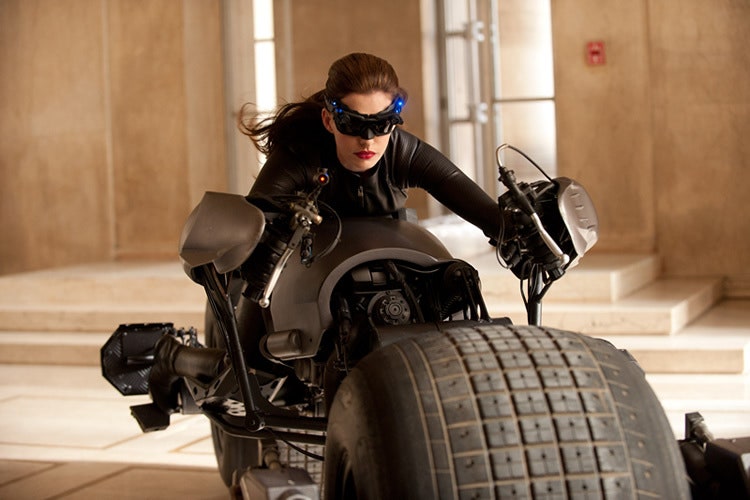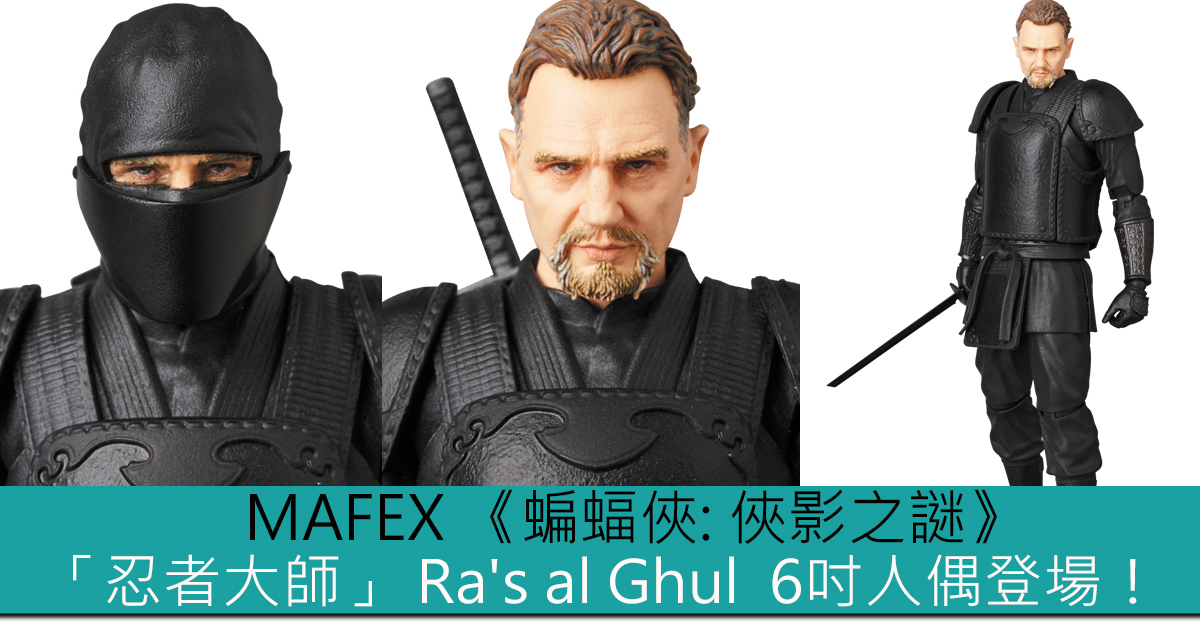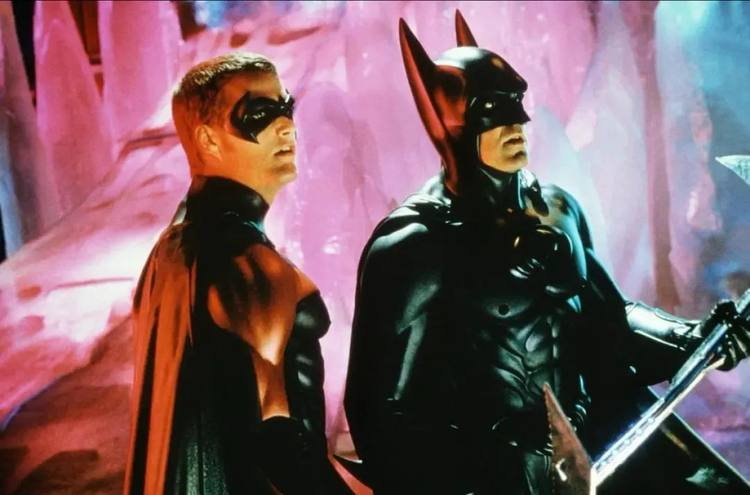The Katana in Batman Begins: Dual Variations of Ninjutsu Philosophy and Violent Aesthetics
Introduction: The Blade in the Shadow
In Christopher Nolan's Batman Begins (2005), the katana (Japanese sword) serves not only as a lethal tool for the ninja master Ra's al Ghul but also as a narrative symbol that runs throughout the film. This weapon intertwines the secrecy of Eastern ninjutsu with the redemptive mission of Western superheroes, creating a unique system of violent aesthetics. This article will analyze the multiple roles of the katana as the core, exploring its significance in Bruce Wayne's growth, the ideological dissemination of the League of Shadows, and the battle for Gotham City, revealing how Nolan reconstructs the mythological foundation of Batman through cold weapons.

Chapter One: The Katana as a Training Ritual - From Physical Forging to Spiritual Awakening
1.1 The Oath of Non-Killing and the Trial of the Blade
Bruce Wayne's ninjutsu training began with absolute control over the katana in the League of Shadows' Himalayan base. Director Nolan conveyed the core philosophy through a three-stage knife method teaching:
First stage (control of strength): Bruce was asked to chop ice pillars with a wooden knife, but the blade always deviated from the target by the last inch. The ninja master pointed out, The trajectory of the blade reflects the hesitation of the mind.
Second stage (accurate thrust): Under the waterfall, Bruce learned to wield the knife against the current, and the water resistance forced him to learn to overcome hardness with softness, corresponding to the cut off (Kirioroshi) technique in Japanese swordsmanship.
Third stage (life and death choice): Bruce refused to execute a farmer with a real knife, symbolizing the conflict between his Western moral values and the Eastern doctrine of absolute obedience. The katana became a watershed of values at this point.
1.2 The Dialectic of Sword and Identity
When Bruce put on the black armor of the League of Shadows, his scabbard was upgraded from a training wooden knife to a gold-hilted katana. The insignia of the alliance embedded in the hilt (a three-leaf clover totem) implied power ownership, but he broke this sword when escaping from the base, declaring his separation from the ninja master with physical blade destruction.
Chapter Two: Tactical Grammar of the Katana - The Violence Encoding of the League of Shadows
2.1 The Aesthetics of Sword Array in Group Combat
The offensive tactics of the League of Shadows followed a rigorous coordination of swordplay:
Wedge Charge: Frontline members used short swords (Tanto) for thrusting, disrupting enemy formations;
Flank Sweep: Second-line members used field swords (Nodachi) for horizontal sweeping, causing area damage;
Leader Harvest: The ninja master himself made fatal strikes using Iaido cuts, with the scabbard serving as a secondary weapon to block bullets (such as splitting shotgun bursts during the attack on Wayne Manor).
2.2 Biochemical Deterrence with Poison-Coated Blades
During the terrorist attacks in Gotham City, the blades of the League of Shadows were coated with liquid variants of hallucinogenic Fear Gas. Victims who were cut would secrete green fluorescent liquid from their wounds, visually reinforcing the metaphor of the blade is a plague. This design drew inspiration from historical poison swords (Dokutō) traditions among Japanese ninjas but modernized with science fiction techniques.

Chapter Three: Semiotic Deconstruction of the Katana - Bane and Talia's Alteration of Swordsmanship
3.1 Bane: Crushing Technique with Strength
Although Bane primarily uses hand-to-hand combat in The Dark Knight Rises, his early training in the League of Shadows still left marks on his swordsmanship:
Modified Handle: Bane's mechanical respirator combined with the sword handle, releasing compressed gas to enhance slashing force when swinging (such as cutting iron chains in prison riots).
Reverse Grip: Unlike traditional Japanese sword grips, Bane adopted a reverse diagonal slash from Philippine stick fighting (Eskrima), implying his rebellion against the orthodoxy of the alliance.
3.2 Talia: The Dual Nature of Secret Swords
Talia al Ghul's katana was hidden in her evening dress crinoline, with the scabbard disguised as a belt buckle. This contrast between feminine and deadly reached its climax in a Wayne Enterprises gala scene where she danced a waltz close to Bruce while pressing the tip of her sword against his spine, completing her identity switch from lover to assassin.
Chapter Four: Cultural Hybridization in Weapon Design - Melting Pot of Eastern and Western Elements
4.1 Reinterpretation of Tsuba (Sword Guard)
The guard of the League of Shadows' katanas abandoned traditional circular or square designs, opting for sharp triangular hollowed shapes. This geometric form echoed both the alliance insignia and Gotham City's architectural contours (such as gothic spires), localizing Eastern weapons as extensions of Gotham shadows.
4.2 Multi-functionalization of Saya (Scabbard)
The scabbards integrated tactical modules for League members:
Smoke bomb launcher: The bottom of the scabbard could release tear gas, paying tribute to ninja skills.

Chapter Five: The Samurai Sword and the Paradox of Immortality in the Lazarus Pit
5.1 Ritualistic Regeneration of the Blade
In an unreleased deleted scene, after each resurrection from the Lazarus Pit, the Ninja Master personally breaks his old sword and forges a new blade. This setup, where the body regenerates while the soul decays, is metaphorical for the coexistence of physical renewal and spiritual degeneration—the sharper the blade, the more chaotic the soul.
5.2 Blood Sacrifice and Ecological Tyranny
The ultimate plan of the League of Shadows—to vaporize Gotham's water supply with microwave emitters—essentially upgrades the localized killing of the samurai sword into a civilization excision surgery. Nolan uses this to critique extreme environmentalism: when the samurai sword transforms from a tool for justice to a weapon for ethnic cleansing, the Eastern philosophy it embodies undergoes alienation.
Conclusion: The Blade of Gotham with No Return Sheath
The samurai sword in Batman Begins represents Nolan's deconstruction and reconstruction of the superhero genre. When Bruce ultimately defeats the Ninja Master with batarangs, this dagger versus long sword showdown proclaims the victory of Western pragmatism over Eastern absolutism. However, the legacy of the League of Shadows lingers like a ghost—in The Dark Knight Rises, Bane's broken sword still stands amidst the ruins of Gotham's court, reminding us that the true demons never left; they just changed blades.
SEO Strategy
Title (Under 300 Characters)
"Katanas in Batman Begins: How Nolan’s League of Shadows Weaponized Ninja Swords | Ra's al Ghul, Bane & Symbolism"
Meta Description (Under 500 Characters)
Dive into Batman Begins’ katana lore: Ra's al Ghul’s poison blades, Bruce Wayne’s sword training, and the League’s tactical choreography. Explore how Nolan hybridizes ninjutsu with Gotham’s darkness, from Talia’s hidden daggers to Bane’s heterodox combat. Essential for DC fans and film theorists.
